Genre: Simulation Developer: Gremlin Int. Publisher: Sega Ent. No. of Players: 1-2 Released: 1995
Don’t you hate it when the manager of your favorite team is making another boneheaded decision? Trading away the sole shining star of the past season for an old fart on offense who hasn’t had a decent scoring average in years? And why does he still build his offensive strategy around a player who is constantly benched with one injury after another? Wouldn’t it be high time he gave that young talent from the teams’ youth section a chance instead? That way, they’ll surely blow another chance at the championship! Year after year, millions of armchair coaches look at the new seasons’ rosters and think: “I could do a better job!”
No wonder management sims are so popular, they give sports fans the chance to take the fate of their favorite teams into their own hands, not by controlling a virtual player on the field but by devising strategies and team formations, directing the training regimen, negotiating transfers and advertising contracts and modernizing the stadium to guarantee a steadily increasing income. After all, more money means better players and better results, which means more fans and more money… am I right?
This is the baseline of Premier Manager neatly summarized, a PAL exclusive for the Sega Mega Drive (no Genesis version for this one, I’m afraid). British developer Gremlin Interactive had already made two games in its football management series (that’s proper association football, or “soccer” as the Americans tend to call it) for the home computers of the day, mainly the PC, the Atari ST, and the Commodore Amiga. The Mega Drive version is essentially a stripped-down version of the second game, Premier Manager 2. Instead of five leagues and up to four players taking turns in managing their respective teams come match day, the Mega Drive version only sports four leagues (Premier League and Divisions 1,2,3 – the lower “Conference League” has been excised) and just two players. Oh, and mouse control was completely supplanted to the Gamepad. There is no Mega Mouse support, which is weird when you’re porting an entirely mouse-driven game that’s entirely based around consulting menus and tables by pointing and clicking them.
Your job is to take the fate of a team from the English soccer leagues into your own hands, striving for glory by advancing through the league system and winning the League Cup, the FA Cup, or the crowning achievement, the Premier League Championship. You won’t be able to pick a top team, however. You will have to work your way up to the Premier League through the regular English League system, which means you’ll have to start in Division three and pick a team that was playing their during the ’95/’96 season. So, instead of managing top tiers like Arsenal, Manchester, or Liverpool your choices are limited to – back then – fourth-stringers like Wigan Athletic, Doncaster Rovers or Hartlepool United. It may be a bummer, but maybe you’ll get a kick out of guiding a slightly rude-sounding team like Scunthorpe to the Premier championship within five or six or ten years – or however long it’ll take, since the game has no fixed end. Also, if you have a faint knowledge of lower-league football teams of the mid-to-late nineties, you will notice that it actually makes a bit of a difference which team you pick – the stronger teams in Premier Manager are actually tied to the stronger teams of the 1994/1995 season, and that strength gets reflected accordingly (for example, Wigan, one of the stronger teams you can start with, actually climbed through the league system from 1995 onwards, culminating in an eight-year spell in the premier league that eventually ended in 2013. The statisticians at Gremlin certainly did their homework). The team you pick at the start will not necessarily be the one you will be stuck with, though. Handle your affairs well, and you may get an offer by another, more prestigious team after the end of the season. Bollock it up though, and you’ll get the shaft.
Your duties are basically, as the title suggests, those of a Team Manager, at least in the sense of how a “Football Manager” was perceived during the 1990s. You decide who in your roster will be in the starting 11, on the bench, or watching the game from the terrace. You decide on which areas your team will focus during their training, and you can even give training tasks to every individual player (Attack or Defense? Shooting, Tackling or Passing?). If your budget allows, you can also hire additional staff through the Job Center: a Co-Trainer will help develop your team’s skills faster, Scouts can locate new talents, a physio helps injured players recuperate faster, and investing into your Youth Team may at some point advance a promising youngster into your ranks.
You can also bolster your squad through the transfer market, which is an interesting mechanic. For starters, you can’t just spend all the money you’ve got willy-nilly on the strongest player. Each season, the virtual owners of your team earmark a certain amount of your overall liquid assets that you may spend on transfers. So, you have to take into consideration how much you are willing to spend on individual new signings or be unable to purchase new players when you run out of funds. Your decisions will affect your budget in the future as well. Overspend on new hires that don’t really benefit your team, and you may get less of a budget for transfers in the future. Also, bidding on players is an interesting feature in and of itself. While members of your team get assigned strict numerical values giving a clear indication of how strong they are at certain tasks, on the transfer market things are murkier. Here, only the strongest skill of a player gets highlighted, and instead of a concise, determinate number you only get a ballpark estimate rating like “Fair,” “Good,” or “V. Good” along a star rating of one to five (the more, the better). You also cannot outright buy a player: You enter the amount you’d be willing to pay, whereupon three rounds of bidding start. Bid too low, and you will prematurely be eliminated from the process – bid too high from the get-go, and the price might inflate over the three rounds to a level you cannot or will be unwilling to afford. Also, if a higher-ranked team bids, they might get the acceptance even if their bid was lower than yours. Hiring new players thus turns into a bit of a gamble and requires a finer touch than just throwing money to the wind.
Speaking of which, you can also spend your money on your team’s stadium. Your main source of income will be selling tickets for the game, so you want to get more people into your venue. So you can spend money on increasing the capacity (seated or standing), more luxurious accommodation, lighting fixtures, a bigger scoreboard, and safety (a very hot topic in English football stadiums during the late ’80s and early ’90s, as anyone familiar with the terms “Hillsborough disaster” or “Bradford City Stadium fire” will attest.) Another source of income will be advertising space that you can rent out in your stadium, the amount of which will be determined by the number of spaces available and the duration of the campaign, and, to a certain degree, your success rate. During the match day itself, Premier Manager simulates a match between your team and your next opponent, where your actions are limited to changing up your teams strategy, decide on substitutions or determining the speed of the simulation (which you will sooner or later leave on the “Very Fast” setting most of the time, trust me on this).
The game seems to be immensely detailed for a mid-’90s management simulation. However, the presentation is a big letdown, especially for a game released near the tail-end of the Mega Drive’s lifespan. Sure, some players might enjoy digging through tables and comparing stats, but that’s basically all you do: read lists of names, compare numbers to other numbers, and derive your strategy from there. There are hardly any visual or aural flourishes to dress up the walls of texts and numbers you’ll have to deal with. Even the match simulation is a bit of a letdown, as there aren’t any “real” scenes to watch. All you do is stare at a representation of a scoreboard and read what’s happening as short snippets of text. There are a scant few animations whenever someone’s scoring a goal or a keeper makes a save, but there is little to no variety between them.
The game would then have to stand on the strength of its simulation aspect. Truth be told though, there isn’t much to it. Trying to experiment with different strategies is a waste of time and resources. It’s far better to pick a certain formation that works and then stick with it (a formation of 3-5-2 or 3-4-3, with set orders to your team on short passes, normal tackling, short range shooting, and sweeper-style usually does the trick. The only time it pays to change things up a bit is whenever you’re playing against a vastly stronger team, in which case you should switch to hard tackles and long distance shots). A lucky hand at the transfer market and a modicum of common sense when upgrading the stadium, and you should have no trouble leading your team all the way into the premier league and winning the cup finals with a division-ranked squad. It’s like the game is presented as a huge dish, but once you’ve eaten for a while you realize that there is little meat, and the garnish is tasteless and boring.
Surprisingly Premier Manager was reviewed quite well in the English gaming magazines of the day. These scores were mostly focusing on the fact that this was the only football management simulation available for ANY console back in the day (and only one of two for the entire 16-bit-era, the other being its direct sequel Premier Manager ’97) and the fact that it was an accurate and relatively detailed representation of the English league system in particular, probably topped off with an extra helping of “local English developers.” If you are a huge fan of both the English football league system and comparing spreadsheet data, and you are hankering for mid-’90s nostalgia, AND you are looking for something you can play for hours on the side while still having some brain capacity left for doing other things like binge-watching the entire three seasons of Stranger Things for some additional ’80s nostalgia, then yeah, this might just be the right game for you. Otherwise it’s pretty mediocre; the simulation isn’t too deep, the presentation is very lackluster, and the overall package is best described as inoffensive, the hidden cussword in “Scunthorpe” notwithstanding.
Score: 5 out of 10

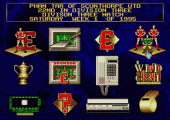
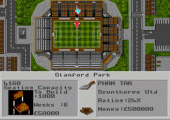
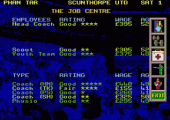
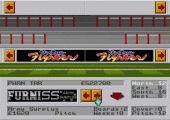

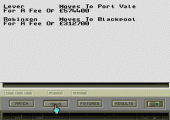
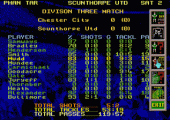
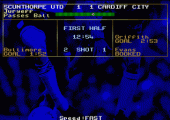
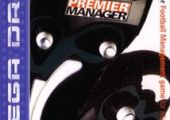
Recent Comments